Pega GenAI Blueprint: Where Business Ideas Become Application Reality
Before any great album comes to life, there's often a moment of creative spark—a songwriter experimenting with different chord progressions, trying various lyrical approaches, or jamming with different musical styles to find the right direction. In the world of enterprise application development, Pega Blueprint serves as this creative space where business ideas transform into structured application designs.
Blueprint is Pega's collaborative application design tool that leverages generative AI to accelerate the journey from business concept to working application. What traditionally took weeks of requirements gathering, stakeholder alignment, and technical specification can now be accomplished in days or even hours. By simply describing your business process and uploading supporting materials, Blueprint generates foundational assets—Case Types, Data Models, and Personas—that form the building blocks of your application.
Think of Blueprint as your creative rehearsal space. Before you commit to the full album release or live events, you can experiment with different approaches, try various prompts to explore possibilities, and iterate on ideas until business stakeholders align on the rough outline of what needs to be accomplished. This initial exploration phase allows teams to test concepts, refine requirements, and ensure everyone's singing from the same song sheet before moving into the more intensive development phases.
Just as musicians often record rough demos to capture the essence of a song before heading into professional recording sessions, Blueprint enables you to create low-fidelity application designs that capture business intent and process flow. These designs serve as the foundation for more detailed work, ensuring that when you do move into further refinement, you're building something that truly resonates with your business needs.
In music production, fidelity represents the faithfulness with which sound is captured and reproduced—from raw, scratchy demo recordings to rich, layered studio albums that bring every guitar riff, drum hit, and vocal harmony to life. As bands progress from bedroom recordings to professional studio sessions, they add clarity, depth, and precision—transforming rough song ideas into immersive sonic experiences that connect with listeners..
In enterprise software, this same principle determines the difference between project success and costly failure. A low fidelity design might capture the bare essentials of a business idea, but lacks the precision to guide real implementation. A high fidelity Blueprint, conversely, produces business intent, data architecture, user requirements, and system behaviours into a coherent, detailed specification—much like transforming a simple chord progression into a fully produced album track.
Why High Fidelity Matters: The Cost of Incomplete Productions
In today's rapidly evolving digital landscape, the distinction between successful application deployment and expensive project overrun often hinges on one critical element: the precision of your initial Blueprint design. Organisations that prioritise achieving high fidelity during the Blueprint phase consistently demonstrate superior outcomes, reduced development risk, and accelerated time-to-value.
Consider this: just as a professional album requires every instrument to be perfectly recorded and every band member to understand their precise role in each song, enterprise applications demand comprehensive specification of every component, integration, and user interaction. The challenge we're addressing is fundamental to modern application development success.
Traditional approaches to requirements gathering and application design frequently result in disconnects between business intent and technical implementation. These gaps manifest as scope creep, extended development cycles, and applications that fail to deliver the intended business outcomes. High fidelity Blueprint design represents a strategic methodology for eliminating these costly disconnects through systematic coverage of all application requirements.
The Five Tracks of High Fidelity Excellence
Like a concept album, achieving high fidelity requires mastering five critical tracks that ensure comprehensive coverage:
Track One: Setting Up the Studio
Every great album begins with a clear vision of its purpose and target audience. Similarly, the journey toward high fidelity starts with establishing a robust application foundation. This involves articulating the application's objective, desired functionalities, and expected business outcomes with precision that goes beyond surface-level requirements.
High fidelity demands comprehensive documentation of current process flows and supporting materials—the equivalent of understanding the musical influences and genre conventions you're working within. This includes definitions, standard operating procedures, and checklists that provide context for the application's role within the broader business ecosystem.
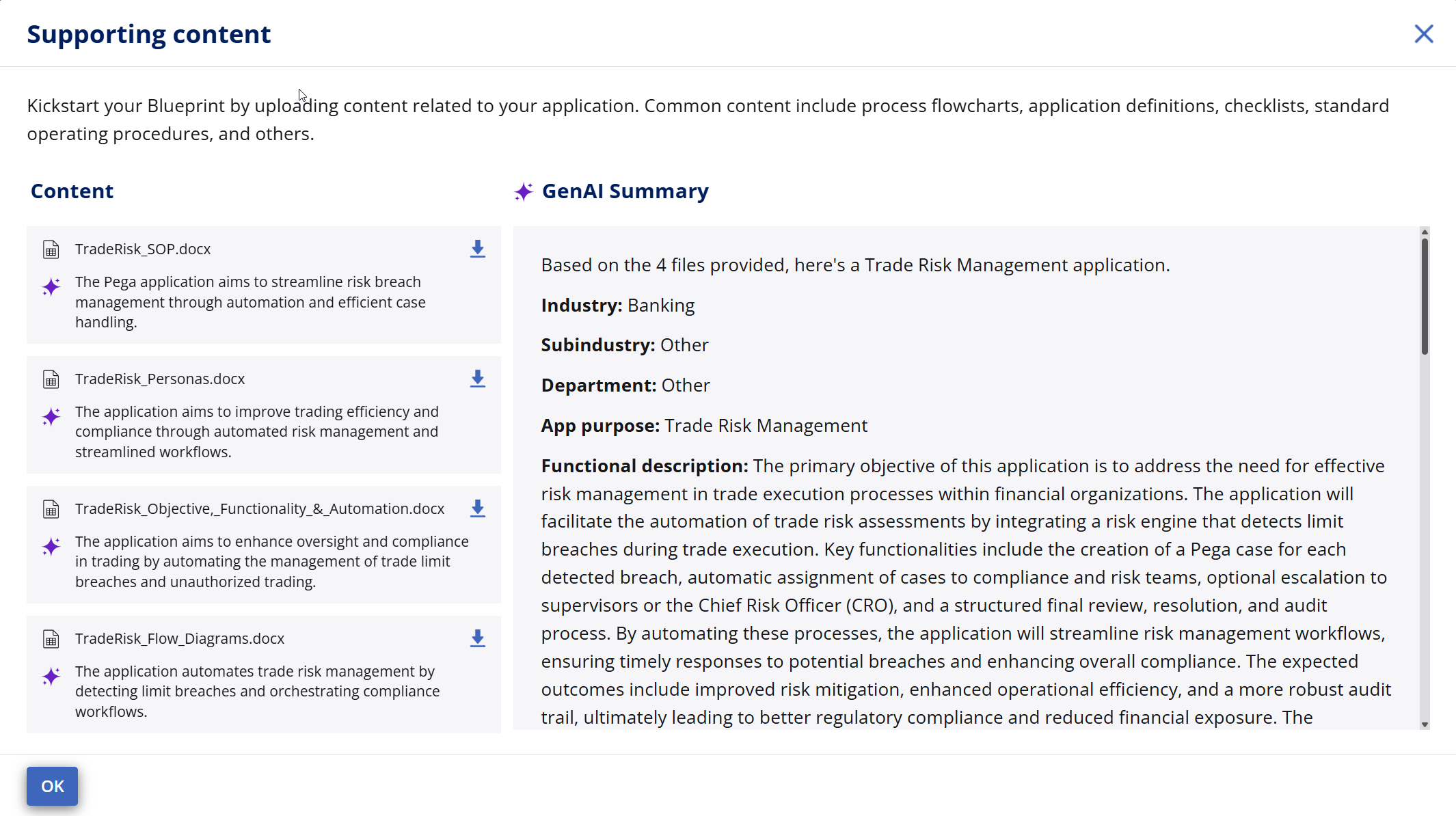
Upload Multiple FilesStudio Setup Checklist:
- Application description clearly outlines objectives, desired functionalities, and expected business outcomes
- Current process flows uploaded with supporting materials (definitions, SOPs, checklists)
- Existing data models for client data structures attached where available
- Comprehensive context established for the application's business ecosystem role
When existing data models for client data structures are available, these become invaluable reference points that inform the application's data architecture. Leveraging Blueprint, you can now easily add all of these supporting documents, providing much richer and clearer context when creating your first workflows.
This foundational work is like setting up a professional recording studio—every piece of equipment must be properly configured and every acoustic element considered before the first note is played.
Track Two: Mixing Business with Technology
A high fidelity approach to case type design ensures that the technology solution accurately reflects the end-to-end customer journey—like ensuring every song serves the overall album narrative. The case types must align precisely with project scope whilst clearly defining the relevant business transaction and intended process flow, this is the opportunity to discard unnecesary case types or tracks or add in additional case types.
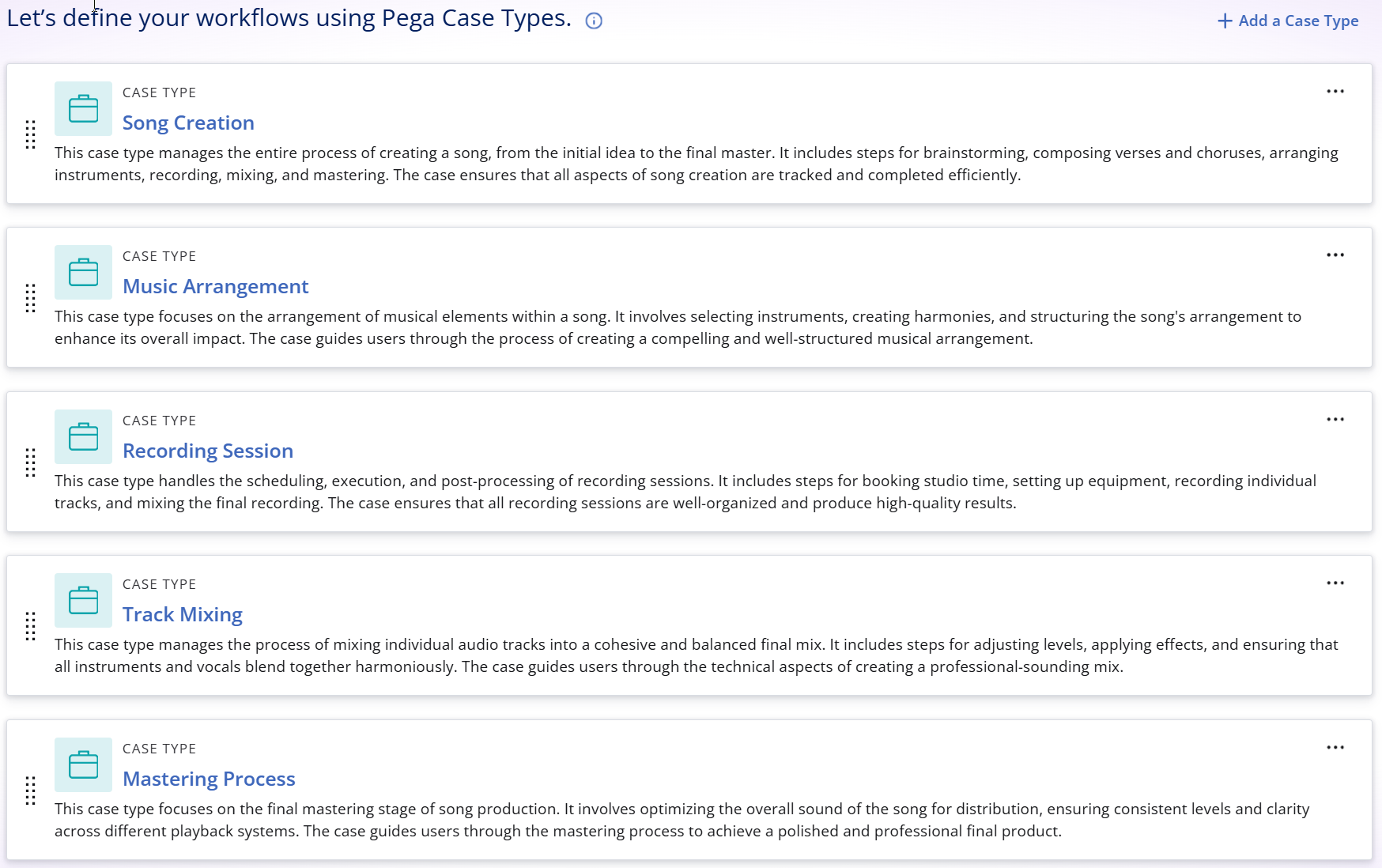
Our experience with similar projects demonstrates that organisations achieving high fidelity in case type design see measurable improvements in user adoption rates and process efficiency. The reason is straightforward: when applications accurately reflect how people actually work, adoption becomes natural rather than forced.
Case Type Mastery Guide:
- Case Type Description: Clearly defines the relevant business transaction and aligns with intended process
- Case Data Model: Includes the most relevant fields that effectively summarise and support the case
- Stage Configuration: Both primary and alternate stages are clearly defined and configured
- Case Creation Fields: Clearly defined with proper hierarchy establishment
- Release Assignment: Case type assigned to appropriate release version for strategic implementation
Think of this as arranging your album—each song (case type) must serve the overall narrative whilst standing strong on its own merits. The sequencing matters as much as the individual tracks.
Track Three: Perfecting the Sound
High fidelity workflow design requires meticulous attention to each step's purpose, responsible persona, and key configuration details—much like a producer ensuring every guitar tone and drum sound is perfectly captured. This includes documenting actions, data fields, and system interactions with sufficient detail to guide implementation teams effectively.
Different step types demand specific approaches, each requiring the same attention to detail that a sound engineer applies to different instruments:
|
Workflow Step Production Notes: Collect Information Steps:
Approval/Reject Steps:
Decision Steps:
Integration Steps:
|
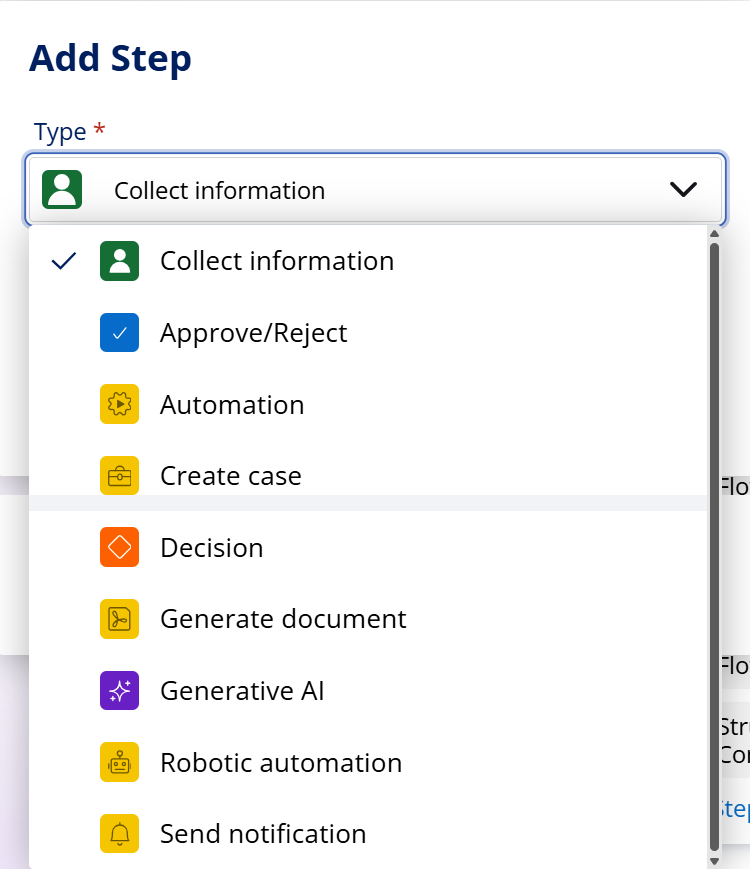
|
This level of detail ensures that when your development team begins implementation, they're working from a complete score rather than improvising from chord charts.
Track Four: Creating Seamless Transitions
High fidelity data and integration design requires each data object to include comprehensive descriptions covering integration purpose, type, and method—like ensuring every track flows seamlessly into the next without jarring transitions. This involves clearly identifying whether integrations are new or existing, specifying the appropriate HTTP methods (GET, PUT, POST), and documenting inbound requirements.
For complex integration scenarios, collaborative approaches with delivery teams help define service specifications when existing definitions are unknown. This collaborative methodology ensures that integration requirements are both technically feasible and aligned with business needs.
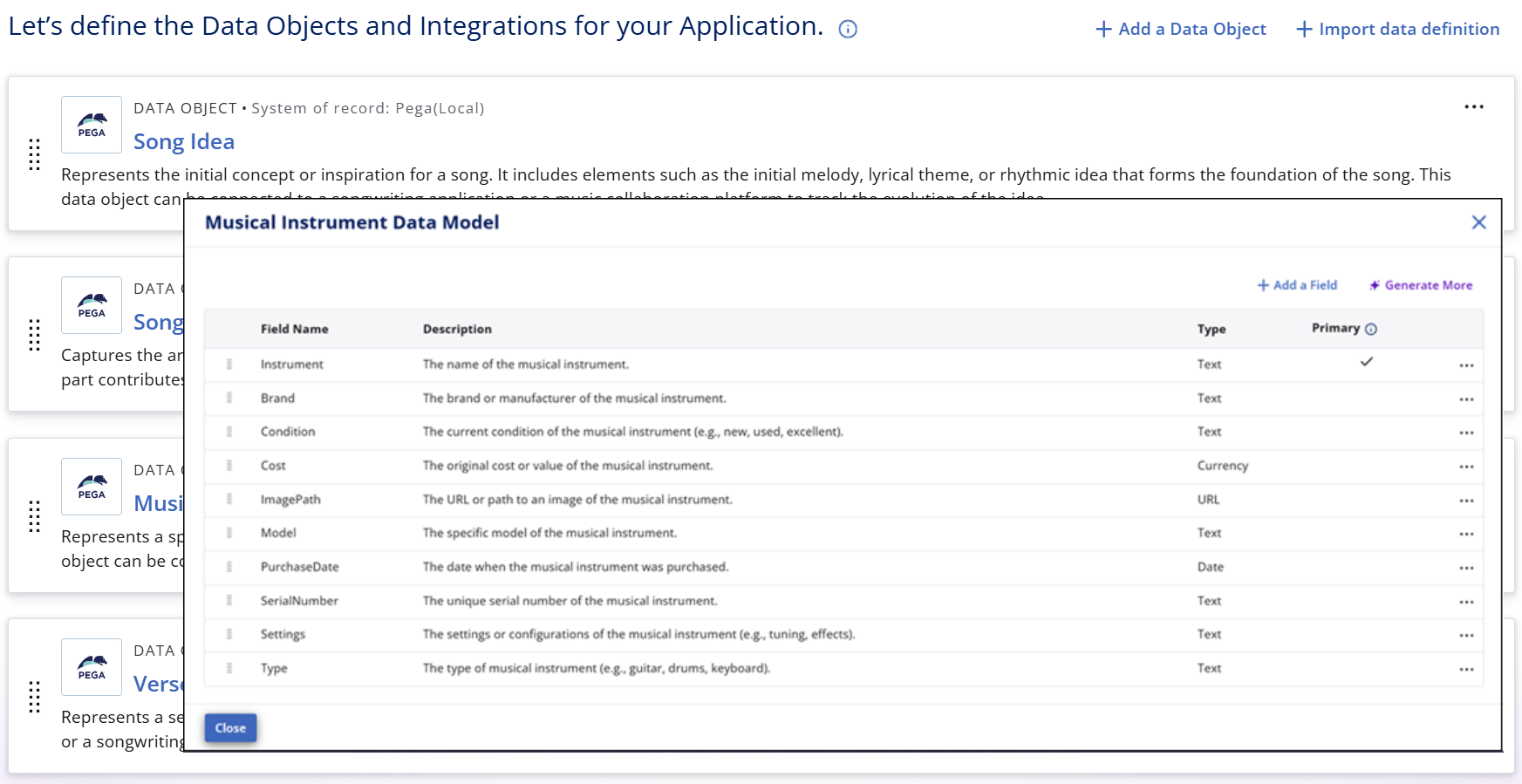
Integration Harmony Checklist:
- Purpose Definition: Clear description of integration purpose (getCustomerData, UpdateCustomerAddress, etc.) Captured within the "Data Object Description" of the Edit Data Object section
- Integration Type: Specified as new or existing with method (GET, PUT, POST, Inbound) Captured within the "Data Object Description" of the Edit Data Object section
- Service Separation: Separate data classes for each service (data structures, connectivity, and availability vary) Captured within the "Data Object Description" of the Edit Data Object section
- Systems of Record: Internal or External identification with specific system names Captured within the "System of Record" of the Edit Data Object section
- Data Model Properties: Added to case data model with data types and descriptions
- External Data Sources: Identified as part of property descriptions where applicable
The practical outcome of this detailed approach involves creating separate data classes for each service, recognising that data structures, connectivity, and availability will likely vary across different systems. This separation provides the flexibility needed for robust, maintainable integrations—like having separate mixing channels for each instrument rather than trying to blend everything through a single input.
Track Five: Connecting Artists to Performance
High fidelity persona development ensures that each role is clearly aligned with the solution and includes concise, accurate role descriptions—like ensuring every band member understands not just their part, but how it contributes to the overall sound. This involves identifying which case types and data objects each persona can access, assigning appropriate communication channels, and mapping personas to specific implementation releases.
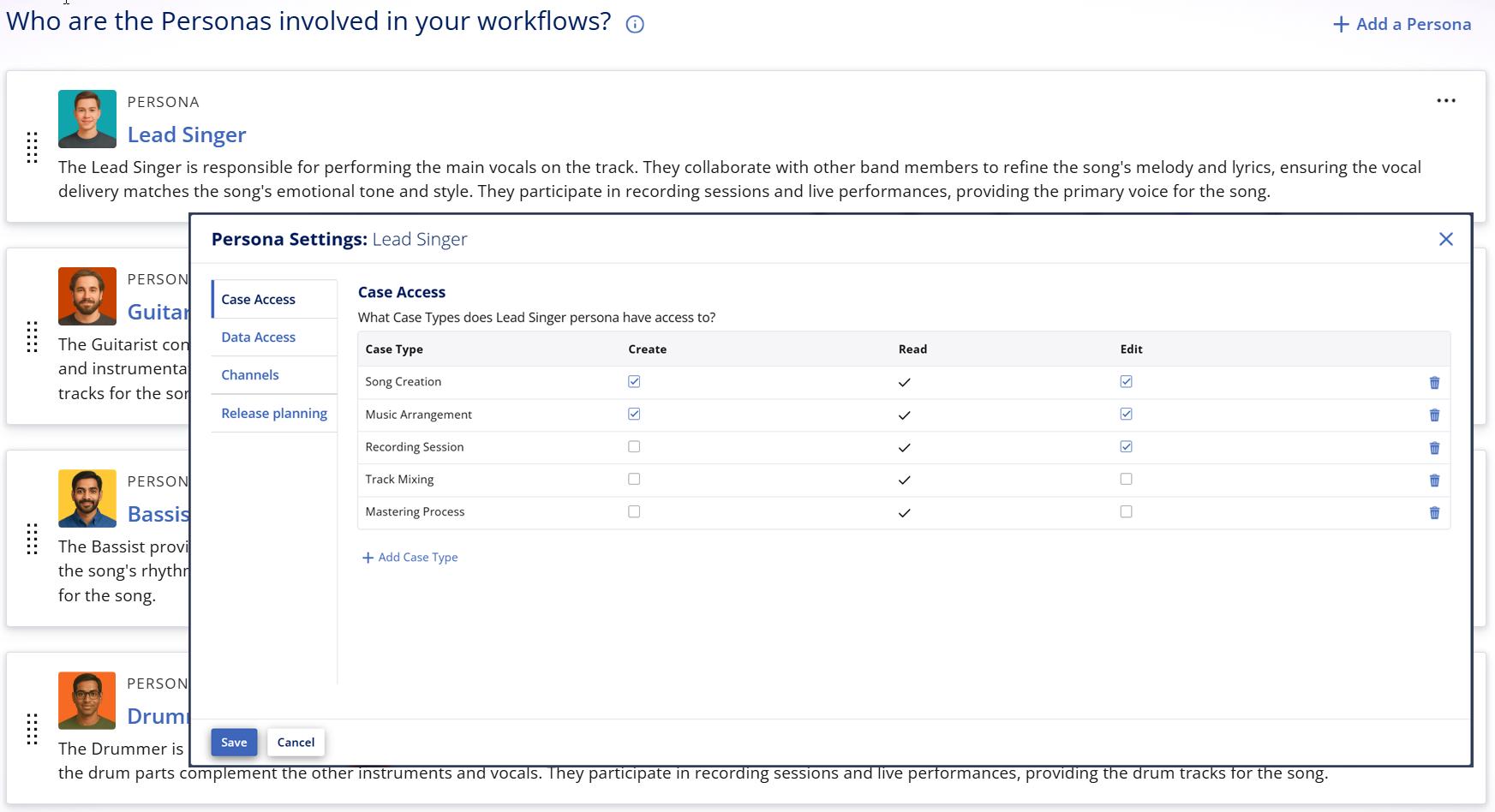
Persona Performance Guide:
- Role Alignment: Each persona aligned with solution including clear, concise role descriptions
- Access Definition: Case types and data objects accessible to each persona clearly identified
- Communication Channels: All relevant channels appropriately assigned to each persona
- Release Mapping: Each persona mapped to specific release for strategic implementation
- Real-World Alignment: Persona definitions reflect actual user responsibilities and access requirements
Moving forward, persona definitions must reflect real-world responsibilities and access requirements. This alignment between defined personas and actual user roles significantly impacts both security implementation and user experience design—ensuring your application performs as beautifully for end users as your favourite album does through quality headphones.
Studio Session: A Practical Example
Consider a customer onboarding application for a financial services firm. Using our five-track approach:
Track One establishes the studio with comprehensive documentation of current KYC processes, regulatory requirements, and existing customer data models. Track Two defines case types for different customer segments (individual, corporate, high-net-worth), each with specific data requirements and approval workflows. Track Three details each workflow step, from initial application collection through compliance checks to account activation. Track Four maps integrations with credit bureaus, regulatory databases, and core banking systems, each with separate data classes and clear service specifications. Track Five defines personas from customer service representatives to compliance officers, each with appropriate access levels and communication channels.
This systematic approach transforms a complex regulatory process into a clear, implementable specification—like turning a rough song idea into a radio-ready track.
The Album Release: Quantifiable Returns on High Fidelity Investment
Organisations that consistently achieve high fidelity in their Blueprint designs report several quantifiable benefits that demonstrate clear return on investment:
Reduced Development Risk: Comprehensive upfront design work identifies potential issues before development begins, reducing costly rework and scope changes.
Accelerated Delivery: Clear, detailed specifications enable development teams to work more efficiently, often reducing overall project timelines.
Enhanced User Adoption: Applications that accurately reflect business processes see adoption rates significantly higher than those based on incomplete requirements.
Improved Quality: Detailed persona and workflow definitions result in applications that better meet user needs, reducing post-deployment support requirements substantially.
Producing Your High Fidelity Implementation
To ensure alignment on implementing high fidelity practices, organisations should focus on several key areas:
Comprehensive Pre-Production: Invest time in thorough application foundation work, recognising that hours spent in design save weeks in development and testing phases.
Band Collaboration: Engage business users, technical teams, and end users throughout the Blueprint process to ensure all perspectives are captured and aligned.
Iterative Mixing: Leverage Blueprint's collaborative capabilities to refine and validate designs before committing to development, taking advantage of the platform's ability to generate working prototypes quickly.
Quality Control: Implement systematic reviews of Blueprint designs against high fidelity criteria, ensuring that all components meet the standards necessary for successful implementation.
Additional Scope Considerations
Beyond the core five tracks, high fidelity implementations often require attention to supporting elements that enhance the overall production:
- Additional Services: Data migration support and comprehensive testing frameworks
- Supporting Features: Get Next Work functionality, digital messaging capabilities, and DX components
- Smart Application Features: Advanced automation and AI-driven enhancements that elevate user experience
These elements are like the final mastering process—they don't change the fundamental songs, but they ensure the album sounds perfect across all playback systems.
The Final Master: High Fidelity as Strategic Advantage
The importance of reaching high fidelity with a Pega Blueprint extends far beyond technical considerations—it represents a strategic approach to digital transformation that recognises the critical relationship between thorough design and successful outcomes.
Organisations that embrace high fidelity Blueprint practices position themselves to deliver applications that truly serve their business needs whilst minimising the risks and costs associated with traditional development approaches. In an environment where digital agility increasingly determines competitive success, a high fidelity Blueprint design becomes not just a best practice, but a business imperative.
The investment in achieving high fidelity pays dividends throughout the application lifecycle, from reduced development costs and accelerated delivery to improved user satisfaction and business outcomes. As digital transformation initiatives continue to accelerate across industries, the organisations that master high fidelity Blueprint design will be those best positioned to capitalise on emerging opportunities.
Like a masterfully produced album, a high fidelity Blueprint ensures every component works in perfect harmony to create something greater than the sum of its parts—delivering not just functional software, but transformational business value.
The Sound Check: Blueprint Preview for Confident Performance
Before any professional band takes the stage for a live performance, they conduct a thorough sound check—testing every microphone, adjusting monitor levels, and ensuring each instrument sounds exactly as intended. Similarly, Blueprint's Preview feature provides the essential sound check for your high fidelity design, allowing you to experience and validate your application's user interface, workflow logic, and data interactions before committing to full implementation. This preview capability transforms your detailed Blueprint specification into an interactive prototype, enabling stakeholders to navigate through case types, test workflow paths, and verify that the designed experience matches business expectations. Just as a sound check prevents embarrassing technical failures during a live show, the Preview feature identifies potential usability issues, workflow gaps, and design inconsistencies before your application goes live—ensuring your carefully crafted high fidelity Blueprint delivers a flawless performance when it matters most.


